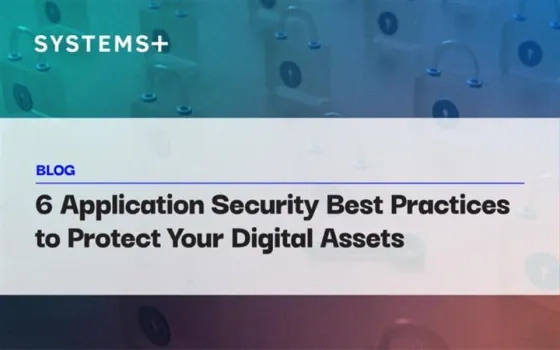In an age where technology is deeply intertwined with healthcare, ensuring robust cybersecurity measures is no longer a luxury but a necessity. With the increasing prevalence of digital health records, telemedicine, and connected medical devices, the healthcare industry has become a prime target for cyber threats. However, amidst the evolving landscape of cybersecurity challenges, healthcare providers are tasked with doing more with less. Let's delve into the hurdles faced by the healthcare sector in cybersecurity and strategies to navigate them effectively.
Learn how to safeguard healthcare data effectively with our comprehensive guide to healthcare cybersecurity.
Healthcare Hurdles in Cybersecurity
-
Sensitive Data Abundance: Healthcare organizations harbor many sensitive data, including patients' medical records, personal information, and payment details. The vastness of this data makes them attractive targets for cybercriminals aiming to exploit it for financial gain or malicious intent.
-
Legacy Systems Vulnerabilities: Many healthcare institutions still rely on outdated legacy systems that may lack essential security features or receive inadequate updates. These systems are more susceptible to cyber-attacks due to their vulnerabilities, posing a significant challenge in maintaining a robust security posture.
-
Resource Constraints: Unlike other sectors, healthcare often operates under tight budgets and limited resources. Allocating sufficient funds and manpower to cybersecurity initiatives becomes a challenging endeavor, especially when competing with other pressing priorities in patient care and operational efficiency.
-
Human Factor Risks: Despite technological advancements, humans remain one of the weakest links in cybersecurity. Employee negligence, lack of awareness, or inadvertent errors can inadvertently expose healthcare systems to cyber threats, emphasizing the need for comprehensive training and awareness programs.
Don’t Surrender to the New Normal of Healthcare Cyber Threats
-
Prioritize Risk Management: Given the myriad of cybersecurity threats faced by healthcare organizations, it's crucial to prioritize risk management efforts. Conducting comprehensive risk assessments, identifying vulnerabilities, and implementing appropriate controls can significantly enhance the security posture of healthcare systems.
-
Embrace Modern Solutions: Transitioning from legacy systems to modern, integrated platforms can bolster cybersecurity defenses. Investing in advanced security technologies such as intrusion detection systems, encryption tools, and endpoint protection solutions can fortify healthcare IT infrastructure against evolving threats.
-
Educate and Empower Staff: Human error remains a prevalent cause of cybersecurity breaches in healthcare. Implementing regular training programs to educate employees about cybersecurity best practices, phishing awareness, and incident response protocols can empower them to become active participants in safeguarding sensitive data.
-
Forge Collaborative Partnerships: Combatting cybersecurity threats in healthcare requires collective effort. Collaborating with industry peers, regulatory bodies, and cybersecurity experts can provide valuable insights, shared resources, and guidance in developing effective security strategies tailored to the unique challenges faced by the healthcare sector.
-
Stay Vigilant and Adaptive: Cyber threats are continuously evolving, necessitating a proactive and adaptive approach to cybersecurity. Healthcare organizations must stay abreast of emerging threats, leverage threat intelligence platforms, and regularly update their security measures to mitigate risks effectively.
Tips for Overcoming These Challenges
Certainly! Overcoming cybersecurity challenges in healthcare requires a multifaceted approach and proactive measures. Here are some practical tips to help healthcare organizations navigate these challenges effectively:
-
Invest in Cybersecurity Education and Training: Provide comprehensive cybersecurity training programs for all staff members, from frontline clinicians to administrative personnel. Educate them about common cyber threats, phishing scams, password hygiene, and the importance of data protection protocols. Regularly reinforce these training sessions to ensure continuous awareness and vigilance.
-
Implement Robust Access Controls: Limit access to sensitive patient data and critical systems only to authorized personnel. Implement role-based access controls (RBAC) and least privilege principles to ensure that employees have access only to the information necessary for their specific roles. Regularly review and update access permissions to align with organizational changes and personnel movements.
-
Adopt Multi-Factor Authentication (MFA): Enhance login security by implementing multi-factor authentication (MFA) across all systems and applications. Require users to provide additional verification factors, such as biometric scans, SMS codes, or token-based authentication, in addition to passwords. MFA adds an extra layer of protection against unauthorized access, even if passwords are compromised.
-
Regularly Update and Patch Systems: Stay proactive in managing cybersecurity risks by promptly applying security patches and updates to all software, operating systems, and network devices. Regularly monitor vendor advisories and security bulletins to identify and address known vulnerabilities before they can be exploited by attackers. Consider implementing automated patch management solutions to streamline the update process and minimize the risk of unpatched systems.
-
Encrypt Sensitive Data: Protect sensitive patient information by encrypting data both at rest and in transit. Implement robust encryption algorithms and protocols to safeguard electronic health records (EHRs), medical imaging files, and other confidential data from unauthorized access or interception. Ensure that encryption keys are securely managed and rotated regularly to maintain the integrity of encrypted data.
-
Establish Incident Response Plans: Develop comprehensive incident response plans (IRPs) to guide healthcare organizations in responding effectively to cybersecurity incidents and data breaches. Define clear procedures for detecting, containing, mitigating, and recovering from security incidents, including roles and responsibilities of key personnel, communication protocols, and legal obligations. Regularly test and update IRPs through simulated exercises and post-incident reviews to ensure their effectiveness.
-
Collaborate with Industry Partners and Government Agencies: Foster collaborative relationships with industry partners, cybersecurity vendors, government agencies, and regulatory bodies to share threat intelligence, best practices, and resources. Participate in information-sharing forums, industry working groups, and cybersecurity alliances to stay informed about emerging threats and mitigation strategies. Leverage external expertise and resources to augment internal cybersecurity capabilities and enhance overall resilience.
-
Conduct Regular Security Audits and Assessments: Perform regular cybersecurity audits, vulnerability assessments, and penetration tests to identify weaknesses in systems, processes, and controls. Engage third-party cybersecurity firms or independent auditors to conduct objective evaluations of organizational security posture and compliance with regulatory requirements. Use audit findings to prioritize remediation efforts and continuously improve cybersecurity maturity.
-
Stay Compliant with Regulatory Standards: Stay abreast of evolving regulatory requirements and industry standards related to healthcare data security, such as HIPAA, GDPR, and HITRUST. Ensure ongoing compliance with regulatory mandates by implementing appropriate controls, conducting regular audits, and maintaining comprehensive documentation of security policies and procedures. Consider leveraging compliance management solutions to streamline regulatory compliance efforts and reduce compliance-related risks.
-
Cultivate a Culture of Cybersecurity Awareness: Foster a culture of cybersecurity awareness and accountability throughout the organization. Encourage open communication channels for reporting security incidents, suspicious activities, or potential vulnerabilities. Recognize and reward employees for their proactive contributions to cybersecurity initiatives and adherence to security policies. By promoting a culture of vigilance and responsibility, healthcare organizations can empower their workforce to play an active role in safeguarding patient data and mitigating cyber risks.
Secure your digital future with our healthcare cybersecurity consulting services and stay ahead of evolving threats.
In conclusion, navigating cybersecurity challenges in healthcare demands a concerted effort to do more with less. Despite resource constraints and inherent complexities, healthcare providers can bolster their cybersecurity defenses by prioritizing risk management, embracing modern solutions, educating staff, fostering collaborative partnerships, and maintaining vigilance in the face of evolving threats. By adopting a proactive and adaptive approach, healthcare organizations can safeguard sensitive data, preserve patient trust, and uphold the integrity of their operations in an increasingly digitized landscape.




















